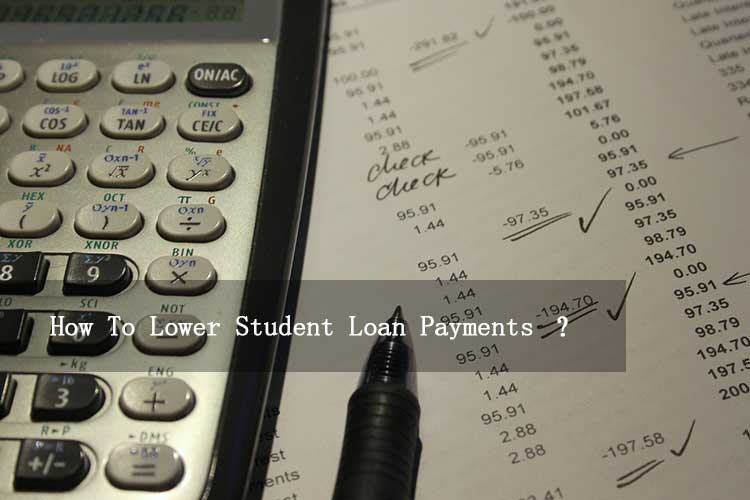
Managing student loans can feel overwhelming, but the good news is that there are several how to lower student loan payments and make them more manageable. Whether you’re currently studying, a recent graduate, an educator, or a working professional with student debt, discovering the right approach can alleviate your financial worries and keep you on track with your payments.
In this guide, we will delve into effective strategies to help you decrease your student loan payments, covering topics like repayment plans, refinancing opportunities, and loan forgiveness programs.
Enroll in an Income-Driven Repayment Plan
If you have federal student loans, one of the best ways to reduce your monthly payments is by enrolling in an income-driven repayment (IDR) plan. These plans limit your payment amount to a percentage of your discretionary income, which can greatly decrease your payments if you’re earning a lower income.
Here are some common IDR plans:
- Income-Based Repayment (IBR): Payments are capped at 10-15% of your discretionary income.
- Pay As You Earn (PAYE): Payments are fixed at 10% of your income.
- Revised Pay As You Earn (REPAYE): Similar to PAYE but accessible to all borrowers.
- Income-Contingent Repayment (ICR): Payments are either 20% of discretionary income or based on a fixed 12-year plan, whichever is less.
With an IDR plan, your payments will adjust according to your income, and any remaining balance may be forgiven after 20-25 years.
Refinance Your Student Loans for a Lower Rate
Refinancing can be a great option for lowering your monthly payments, especially if you have a steady income and a solid credit score. This process involves taking out a new loan to pay off your existing one(s), often at a more favorable interest rate. Numerous private lenders provide refinancing solutions with various flexible terms.
Advantages of Refinancing:
- Reduced interest rates for those with strong credit.
- The ability to lengthen the repayment term, which can decrease monthly payments.
Be careful: If you refinance federal loans through a private lender, you may lose access to federal benefits like income-driven repayment plans and loan forgiveness.
Extend Your Repayment Term
One easy way to reduce your student loan payments is by extending your repayment term. Federal loans provide options for extended repayment plans that can last up to 25 years. While this will lower your monthly payments, keep in mind that it may result in paying more interest over the duration of the loan.
Additionally, some private lenders may also offer extended repayment terms. It’s important to calculate the extra interest you would incur to see if this approach is beneficial for your situation.
Consider Graduated Repayment Plans
Graduated repayment plans are tailored for borrowers anticipating an increase in their income over time. Under this plan, your initial payments are lower and will gradually increase every two years. This option is particularly beneficial for recent graduates or individuals who are just beginning their careers.
Although your payments start off small, it’s important to be ready for them to increase in the future.
Explore Loan Forgiveness Programs
If you’re employed in specific fields like public service or education, you might be eligible for loan forgiveness programs that can wipe out part or even all of your student loan debt.
Here are some well-known Loan Forgiveness Programs:
- Public Service Loan Forgiveness (PSLF): This program forgives the remaining balance after you’ve made 120 qualifying payments if you work for the government or a nonprofit organization.
- Teacher Loan Forgiveness: Teachers in low-income schools can receive up to $17,500 in loan forgiveness.
- State-Based Forgiveness Programs: Various states have programs available for healthcare professionals, lawyers, and educators.
If you meet the criteria for any of these programs, you could see a reduction in your payments while you work towards getting your loans forgiven.
Automate Payments for Interest Discounts
Numerous lenders provide interest rate reductions when you enroll in automatic payments, often referred to as autopay. Even a minor discount, like 0.25%, can lower your monthly payment and lead to significant savings over time.
Additionally, enrolling in autopay guarantees that you won’t miss any payments, which is beneficial for maintaining a good credit score.
Request Deferment or Forbearance for Temporary Relief
If you’re facing a short-term financial struggle, you might consider deferment or forbearance as potential solutions. These options let you either pause or lower your payments for a specific time, giving you a chance to regain your financial stability.
With deferment, no interest builds up on subsidized loans during this time. However, with forbearance, interest does continue to accumulate, even while you’re not making payments.
It’s best to use these options only when absolutely necessary, as they can lead to a higher total debt in the long run.
Make Extra Payments When You Can
Making extra payments on your loan whenever you can is a great idea. Even minor additional payments can lower the overall interest you’ll incur and speed up the process of paying off your loan.
A good approach is to use any unexpected money you receive, such as a tax refund or a work bonus, to chip away at your student loan balance.
Consolidate Federal Loans
If you hold several federal loans, consolidating them can make repayment easier by merging them into one loan. While consolidation might not decrease your interest rate, it could lower your monthly payment by lengthening the repayment period.
Additionally, consolidation simplifies the process of monitoring your payments, which can help you steer clear of missed or late payments.
Look for Employer Loan Repayment Assistance
More companies are beginning to include student loan repayment assistance in their benefits offerings. Some employers make direct payments to help reduce your loan balance, while others may offer refinancing options or matching contributions.
If you’re on the lookout for a job, be sure to inquire with potential employers about this kind of support. It can greatly ease your financial stress.
Which Strategy is Best for You?
The best approach really hinges on your unique situation. Here are a few scenarios to guide your decision-making:
- If your earnings are on the lower side, think about switching to an income-driven repayment plan.
- If you have a solid credit score, refinancing could help you snag a lower interest rate.
- If you qualify for loan forgiveness, look into options like PSLF or teacher loan forgiveness.
- If you need a short-term break, consider applying for deferment or forbearance.
- If you anticipate a rise in your income, a graduated repayment plan might be the way to go.
Keep in mind that you can mix and match different strategies to get the most out of your situation. For instance, you could start with an IDR plan and then refinance when your credit score improves and your income becomes more stable.
Conclusion
Paying off student loans can be manageable and not as daunting as it seems. By exploring the various strategies discussed in this guide, how to lower student loan payments and take control of your financial future. Whether you choose income-driven repayment, refinancing, or pursuing loan forgiveness, the important thing is to remain proactive and well-informed.
Reducing your student loan payments goes beyond just handling debt; it’s about establishing financial security and tranquility. With a solid plan, you can concentrate on what really counts: shaping your future and reaching your aspirations.



